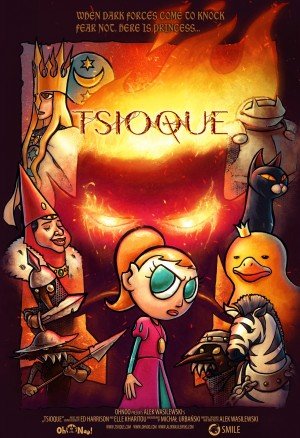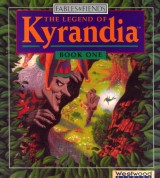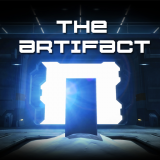Review for Life Is Strange 2: Episode 1 – Roads page 2
I’ll admit, at first glance I wasn’t all that interested in Life Is Strange 2. I’d grown to care about Max Caufield and Chloe Price, the protagonists of DONTNOD’s previous series. Even though that game’s prequel, Before the Storm, disappointed me, the idea of starting all over with a new cast of characters seemed exhausting—especially since they were boys. (Ewww!) Now, I’m perfectly happy to play games with male protagonists (I wouldn’t have many options if I weren’t), but one big reason Life Is Strange resonated with me was its emphasis on the friendship between two teen girls, a theme that doesn’t make the cut in most pop culture, let alone games. So when I saw that the sequel would focus on two brothers, I thought, Meh. I’ll wait for a sale.
Good thing the game went on sale.
Life Is Strange 2 differs from the previous games in a lot of ways, but it turns out that’s okay. In fact, of the three LIS series to date, I believe Roads is the best first episode so far. You play as Sean Diaz, a high school junior who lives with his brother Daniel and single father Esteban in the Seattle area. The story opens on a Friday afternoon as Sean and his bestie, Lyla, get off the bus to the backdrop of indie rock anthem “Lisztomania,” talking about a house party they’re planning to attend that night. Sean likes a girl, Jenn, but doesn’t know how to talk to her. Lyla grabs the phone from his hands and fires off a suggestive text. Problem solved.
The first section of the game, which takes place in Sean’s house as he prepares for the party, introduces him as a three-dimensional teenager. You get to choose if he smokes a cigarette with Lyla or refrains, if he steals money from the “pizza fund” jar on the kitchen counter or not, if he pilfers beer or soda from the fridge, if he tells his dad about his plans for that night or lies to cover his butt. Your initial to-do list involves finding items to take with you to the shindig, which provides a task-oriented way to absorb as much (or as little) as you want of the house’s environmental clues. The interface is familiar: you control Sean directly with the keyboard or gamepad’s left stick and move the camera with the mouse or right stick. Approaching a hotspot causes its label to appear, with the actions you can perform mapped to on-screen icons for your control scheme of choice. I played the episode twice and each time spent about an hour poking around in this early section, to get a feel for Sean and his family situation.
While Sean gets ready for the party, nine-year-old Daniel is working on his zombie costume for Halloween. He and Sean have a believable big brother/little brother relationship, in that Daniel wants to impress Sean and Sean finds Daniel interminably annoying. A bratty younger brother runs the risk of being… well, bratty, but fortunately that’s not the case here, particularly thanks to voice actor Roman George’s nuanced performance. Daniel’s just a kid, being a kid, who gets on his brother’s nerves—especially when he barges in as a zombie while Sean is Skyping with Lyla, eager to show off the fake blood he made from cornstarch.
Sean forces Daniel out of his room and unwittingly sets in motion the chain of events that lead to the game’s true storyline, which has nothing to do with a house party or whether Sean and Jenn will hook up. It’s a skillful bait-and-switch that allows us to immerse ourselves in the Diaz boys’ world before fate suddenly, tragically, yanks it away. I don’t want to spoil what happens, but it involves a scuffle, a nervous cop, and a shooting—and now Sean and Daniel are on the run.
In DONTNOD’s previous series, I complained about the pacing being too slow, especially in the early episodes. Roads seems to start off the same way, but this time for a good reason: once the inciting incident happens, Sean and Daniel can never return to their normal lives. That glimpse into their home and family is the only one we’re going to get. And with no one to depend on but each other, the relationship between the two brothers and the lessons their father taught them will be the foundation for everything that follows.
The rest of Roads feels, appropriately, like the start of a long journey as Sean and Daniel navigate their unplanned situation and get to know each other in a new way. For much of the episode, Daniel doesn’t even know what’s going on. Unable to find the words to explain what happened, Sean tells his little brother that they’re camping and will go home to their father soon. Here’s where the early groundwork laid for their relationship pays off: Sean may have found Daniel insufferably irritating when everything was normal and he could get away with slamming the door in his brother’s face, but like Lee Everett in the first season of The Walking Dead, Sean now has a child to take care of under life-or-death circumstances. This dynamic made me care about both of them—Daniel, the child ostensibly in my care, and Sean, the teenager thrust into the role of parent.
Walking along the southbound highway with a vague plan to go to Mexico, where their father grew up, the brothers’ journey begins in a wooded area where Sean and Daniel must find a spot suitable for spending the night. Wandering the woods gives you a chance to play Sean in different ways. He can be playful by agreeing to a game of hide-and-seek, protective by helping Daniel down a steep drop or taste-testing potentially poisonous berries, instructive by pointing out a raccoon or teaching Daniel how to read trail markers—or you can stay totally hands-off and leave Daniel to fend for himself. Many of these decisions subtly influence the dynamic between the two and the events of the story. Downplay the warning on a “don’t feed the wild animals” sign, for example, and Daniel might have a good night’s sleep, but go out of your way to scare him and he’s sure to have nightmares. Since I felt like I was responsible for Daniel’s well-being, each of these small choices felt as important to me as the bigger moral choices spaced out through the episode.
In the absence of any real puzzles, most of the gameplay comes in the form of interactive dialogue and exploration, with only a few simple Quick Time Events. Occasionally you’ll pick up an item, but you’re more likely to stash it in Sean’s backpack than use it to advance the story. Certain of these objects (billed as “souvenirs”) double as achievements, rewarding you for thoroughly combing the environments. While you can’t control Daniel in this episode, at points you can choose to talk to him or draw his attention to things, which sometimes feeds into the brothers’ relationship. It’s not as blatant as “Daniel will remember that,” but a running wolf icon appears at the bottom of the screen to hint when you’ve done something to influence their bond.
Like the first Life Is Strange, the new series involves a supernatural power, but it’s not clear until late in the episode exactly what this is. While Max’s time-rewind ability often felt like a second plotline tacked on to generate puzzles, this time the superpower is more organic to the story, and at least in the first episode there’s no gameplay attached to it. The time-rewind mechanic often felt gimmicky to me, so I’m on board with this change. Sean also has a creative talent, sketching, which parallels Max’s photography in LIS and Chloe’s graffiti in Before the Storm. At certain points you can prompt Sean to sit and draw his surroundings—a simple (but not completely intuitive) mini-game that involves using the mouse or gamepad as directed until the picture is as detailed as you want it to be. Any sketches you do are stored in Sean’s journal, which contains some older drawings you can flip through to glean backstory. He also carries a cell phone, where you can read previous text chats to learn about his friendships and after-school job.
Sean’s backpack isn’t a traditional adventure game inventory—you can’t take items out of it and use them at will—but you can gain his insight into the things he carries, keep an eye on his wallet, and experience the passage of time as items are added or removed. For example, at one point the game advances by two days, and you can look at a diner receipt to hear Sean’s take on the meal he and Daniel shared off-screen. The backpack also includes an objectives list in case you’re not sure what to do next.
The running tally of money in Sean’s wallet becomes critical when you get to a gas station convenience store to buy food for the coming days. You may start out with more or less money depending on choices made early in the game, and figuring out the best way to use it becomes a serious concern when you’re not sure where the pair’s next meal will come from. You can spend Sean’s last few dollars on healthy food, splurge on candy, or forego dinner and drop your cash on a claw-drop arcade game to win a prize for Daniel. Shoplifting is also an option with potential repercussions. You can ask a picnicking family for food, get Daniel to do the deed for you, or wait until they’re gone and dig in the trash for their leftovers. Whatever you choose, Daniel’s always hanging around nearby, watching and potentially learning. I often felt like I was deciding not only what kind of character I wanted Sean to be, but also what kind of role model he should be for his little brother. That really mattered to me, a lot more than in past LIS games where the “small” choices felt more superficial.
Roads also has five major choices, with stats displayed at the end of the episode so you can see how your decisions compare to other players’. I always like to play these games twice, the first time following my gut and the second time as if it’s “opposite day”—a practice Life Is Strange 2 makes easy by providing five save slots. While none of the big choices had a significant immediate effect on the story, several did tweak Sean and Daniel’s relationship, and others seem to be setting up for consequences later on. Still, none of the major decisions felt gratuitous, which has sometimes been the case in other LIS episodes.
The game starts in late October 2016, just before the presidential election between Hillary Clinton and Donald Trump, and the writers want to make sure you know what that means. An angry letter from a neighbor makes an unsubtle reference to the Diaz family’s immigration status, while “Build a wall” is uttered at least twice. I bristled at these real-world intrusions, if only because they seemed so obvious and self-conscious. Mentions of Skype, Facebook, and Instagram may help ground the game in the here and now, but racist shorthand seemed like a cheap shot, especially considering the developers aren’t American. (Makes me think of the old saying: “I can call my sister ugly, but you can’t.”)
My objection isn’t that the game is set within our current social climate—in fact, it would probably seem unrealistic if a Mexican-American teenager didn’t encounter some racism on a road trip through the United States. But at least in this first episode, the execution seems heavy-handed. Luckily Sean and Daniel feel enough like real people, not caricatures, that I’m willing to put up with it to see what happens. And to be fair, as unsubtle as these references are, there are only a handful in a 3-4 hour episode—much less prevalent than Chloe’s equally grating overuse of “hella.”
Speaking of which, so far LIS2’s dialogue is really good. Sean and Lyla, dishing about their party plans, sound like teenagers. Daniel, blurting non-sequiturs and prattling on about Minecraft or Lord of the Rings (your choice!), sounds like a nine-year-old. The Seth Rogen lookalike (and, funnily enough, soundalike) you meet at the tail end of the episode talks just like I’d expect a softhearted blogger who lives out of his wood-paneled station wagon to talk. The authenticity might have something to do with the assistance of Steve Gaynor and Karla Zimonja, Pacific Northwest residents and developers of teen drama Gone Home, who are credited on the episode as additional writers.
Graphically the new game continues the franchise’s tradition of detailed character models, lush scenery, and artistic lighting and camera angles. While some characters look more realistic than others, I appreciated the diversity among the cast, who vary in ethnicity and body type—just as you’d expect to see in a cross-section of America. The soundtrack is also reminiscent of the past series, but so far skews more toward gentle instrumentals than licensed alternative rock tracks.
By the end of Roads, Sean is fully committed to taking care of Daniel, and seeing the teen’s transformation over the course of the episode endeared him to me. Not only do his responsibilities toward his brother change, but so do his reactions and emotions—a first step toward genuine character growth. At the beginning of the journey I was mainly concerned about Daniel, but by the end I wanted to keep both brothers safe.
The story could go anywhere from here, but the boys’ goal to reach Mexico provides a roadmap for the remaining four episodes. Meanwhile, a teaser after the credits and promised tie-in to the free Awesome Adventures of Captain Spirit mini-episode suggest the currently latent superpower will continue to emerge. But I’m most excited about the spark between these two brothers. They’re not Max and Chloe, and their bond is totally different, but Roads has convinced me that Max and Chloe aren’t what make Life Is Strange special. Keep doing what you’re doing, DONTNOD—I can’t wait to continue this journey.
































